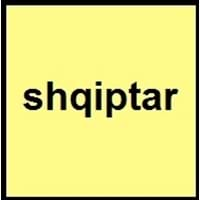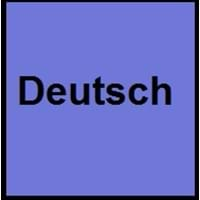Countries
Countries
Albanian diaspora, Southeastern Europe
Austria, Belgium, Germany, Italy, Liechtenstein, Luxembourg, Switzerland
Total No. Of Countries
2
13
7
8
National Language
Albanian diaspora, Southeastern Europe
Germany
Second Language
Kosovo, Macedonia, Serbia
North Dakota, United States of America
Speaking Continents
Europe
Europe
Minority Language
Italian Repubilc, Montenegro, Republic of Macedonia, Republic of Serbia, Romania
Czech Republic, Denmark, Former Soviet Union, France, Hungary, Italy, Namibia, Poland, Romania, Slovakia, Slovenia
Regulated By
Academy of Sciences of Albania, Tirana
Council for German Orthography
Interesting Facts
- Albanian Language has adopted words from Latin, Greek, Turkish, Italian and Slavic languages.
- 74% Albanian people are atheist, they never go to church or mosque.
- One of the large group of Indo-Germanic languages is German.
- The second most popular Germanic language spoken today behind English is German language.
Similar To
Romanian
Dutch, Danish, Norwegian, Swedish and English Languages
Derived From
Not Available
Albanian Languages
Alphabets
Alphabets in
Albanian-Alphabets.jpg#200
German-Alphabets.jpg#200
Alphabets
36
18
26
8
Phonology
How Many Vowels
7
4
10
7
How Many Consonants
29
19
9
1
Scripts
Latin
Latin
Writing Direction
Left-To-Right, Horizontal
Left-To-Right, Horizontal
Hard to Learn
Language Levels
5
4
6
5
Time Taken to Learn
44 weeks
11
30 weeks
9
Greetings
Hello
Përshëndetje
hallo
Thank You
Ju faleminderit
Danke
How Are You?
Si jeni?
Wie geht es dir?
Good Night
natën e mirë
gute Nacht
Good Evening
mirëmbrëma
guten Abend
Good Afternoon
mirëdita
guten Tag
Good Morning
mirëmengjes
guten Morgen
Please
Ju lutem
bitte
Sorry
Me fal
Verzeihung
Bye
mirupafshim
Tschüs
I Love You
unë e dua ju
Ich liebe dich
Excuse Me
Më falni
Entschuldigung
Dialects
Dialect 1
Gheg Albanian
Swiss German
Where They Speak
Albania, Kosovo, Macedonia, Montenegro, Serbia
Switzerland
How Many People Speak
3,400,000.00
20
4,500,000.00
18
Dialect 2
Tosk Albanian
Swabian German
Where They Speak
Albania, Greece, Kosovo, Republic of Macedonia, Turkey
Germany
How Many People Speak
1,800,000.00
20
820,000.00
26
Dialect 3
Arbëresh
Texas German
Where They Speak
Italy
Texas
How Many People Speak
100,000.00
28
6,000.00
35
Total No. Of Dialects
4
4
28
23
How Many People Speak
How Many People Speak?
7.50 million
99+
229.00 million
8
Speaking Population
Not Available
1.39 %
12
Native Speakers
3.10 million
99+
101.00 million
10
Second Language Speakers
3.60 million
31
128.00 million
5
Native Name
shqip / gjuha shqipe
Deutsch
Alternative Names
Not Available
Deutsch, Tedesco
French Name
albanais
allemand
German Name
Albanisch
Deutsch
Pronunciation
[ʃcip]
[ˈdɔʏtʃ]
Ethnicity
Albanians
Germans
History
Origin
1462 AD
6th Century AD
Language Family
Indo-European Family
Indo-European Family
Subgroup
Not Available
Germanic
Branch
Not Available
Western
Language Forms
Early Forms
Old Albanian
No early forms
Standard Forms
Standard Albanian
German Standard German, Swiss Standard German and Austrian Standard German
Language Position
Not Available
9
9
Signed Forms
Albanian Sign Language (AlbSL, in Albanian Gjuha Shenjave e Shqipe)
Signed German
Scope
Individual
Individual
Code
ISO 639 1
sq
de
ISO 639 2
ISO 639 2/T
sqi
deu
ISO 639 2/B
alb
ger
ISO 639 3
sqi
deu
ISO 639 6
Not Available
deus
Glottocode
alba1267
high1287, uppe1397
Linguasphere
55-AAA-aaa
52-ACB–dl & -dm
Types of Language
Language Type
Living
Living
Language Linguistic Typology
Subject-Verb-Object
Subject-Object-Verb, Subject-Verb-Object
Language Morphological Typology
Synthetic
Fusional, Synthetic












